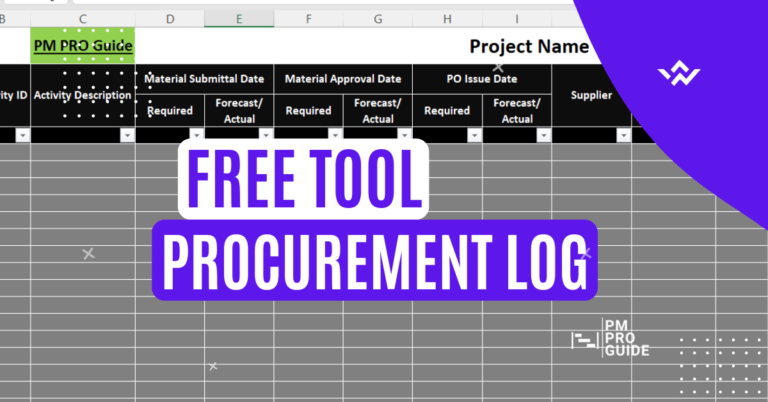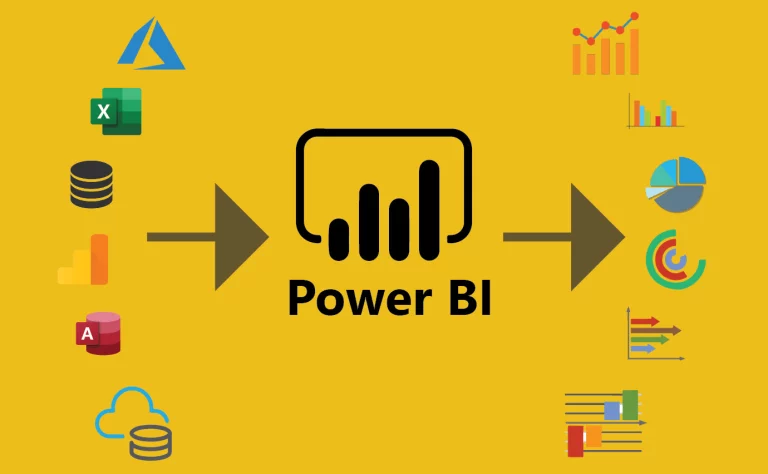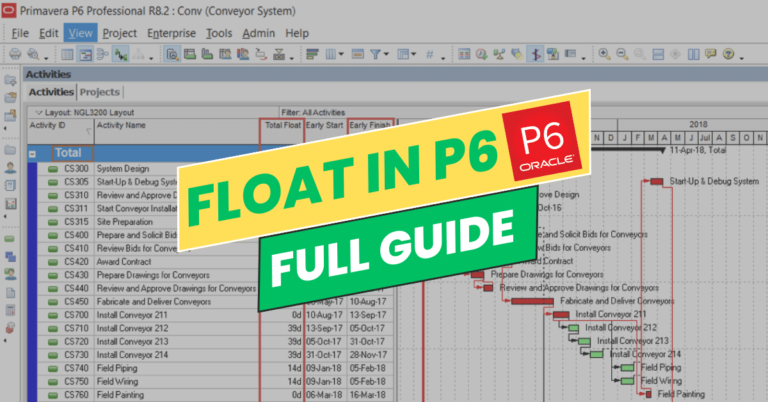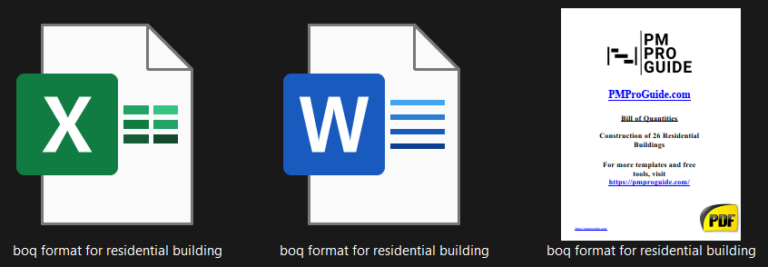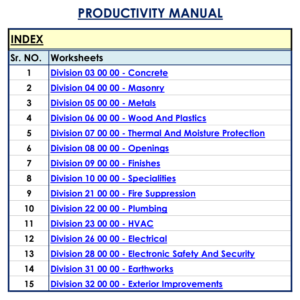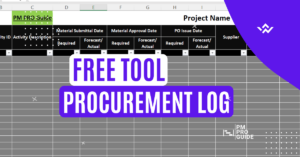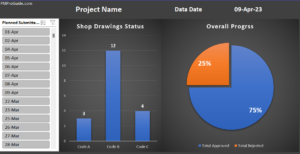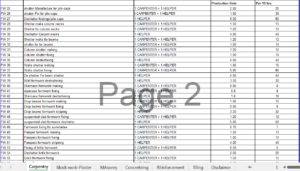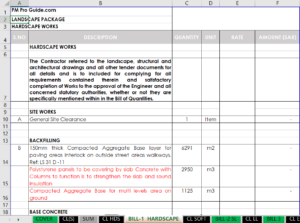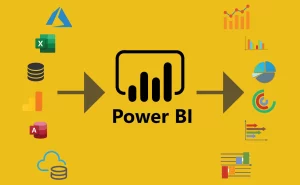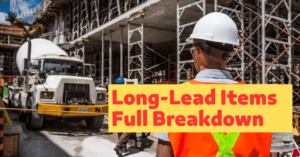Table of Contents
Introduction
If you’re looking to hire a planning engineer for your construction project, it’s essential to conduct a successful planning engineer interview. Planning engineers play a critical role in the success of any construction project, and it’s crucial to ask the right questions during the interview process to ensure you hire the right candidate.
As a planning engineer, the professional is responsible for creating detailed project plans, schedules, and budgets to ensure that all work is completed on time and within budget. These professionals must possess a range of technical and soft skills, as well as the ability to communicate effectively with project stakeholders.
Hence, it’s essential to ask relevant interview questions to gain a better understanding of a candidate’s experience, qualifications, and fit for your organization.
In this article, we’ll discuss the top interview questions for planning engineers and why they’re important to ask. By asking these questions, you can assess the candidate’s experience and knowledge level, communication skills, and problem-solving abilities.
Ultimately, this will help you make a more informed hiring decision, ensuring you select the best planning engineer candidate for your construction project. So, let’s dive in and explore the key questions to ask when conducting a planning engineer interview.
Planning Engineer Interview Questions
Question 1
What is a constraint in primavera?
Constraints in primavera are to fix the early or late start or finish dates of activity as per the following options:
A- The Project Must Finish by
B- Mandatory Start / Mandatory Finish C-Start / Finish On or After
D- Start / Finish On or Before
E- Start / Finish On F-Expected Finish
Question 2
what is the clause to be refereed in FIDIC when there is an entitled for an extension of time Eot?
Clause 20.1, “If the Contractor considers himself to be entitled to any extension of the Time for Completion and/or any additional payment, under any Clause of these Conditions or otherwise in connection with the Contract, the Contractor shall give notice to the Engineer, describing the event or circumstance giving rise to the claim. The notice shall be given as soon as practicable, and not later than 28 days after the Contractor became aware, or should have become aware, of the event or circumstance”.
Question 3
What is the reasonable range of float you assume while checking the look ahead work activities?
The float range is varied from one project to another. However, in my opinion, 10% of the project duration is the maximum reasonable float for any project.
Question 4
What is the Critical Path? How do you identify it and if any activity has negative slack, how can you adjust the duration?
The critical path is usually the activities on the longest path with zero float. Any delay in these activities will lead to a delay in project duration. Usually, critical activities are shown in red color or say zero float in columns. For reducing duration you can adjust it by reducing the duration or changing the relationship between activities. However, planning engineers should pay attention to maximum resources (resource constraints) while crashing the critical path.
Negative slack usually results from constraints in the activities. Planning engineers should follow up on the negative float path and find the wrong relationships or constraints and fix it.
Question 5
What is the difference between Planning & Scheduling Engineer?
Planning Engineer can work along with the project team to develop a complete time schedule including cost of resources. Planning Engineer can lead the team and influence his/her point of view.
Scheduling Engineer can only follow the senior planning engineer or project manager’s instructions to create logic between project activities, but s/he can’t develop the time schedule alone.
Question 6
What is the difference between a recovery schedule and a revised schedule?
The recovery schedule keeps the same finish date with some corrective actions to recover the delay such as adding more resources and breaking down some activities and so on… In the revised schedule we have a new finish date because of claims or adding a new scope of work (amendment).
Question 7
You are working on a project and somewhere in the middle of the project. The progress variance was -5% and still, you are achieving the contractual completion date. How is it possible?
The contractor is working on a critical path and delays are on non-critical activities
Question 8
How can you define the Critical Path in Primavera?
Simply filter the activities with Zero Total Float.
Question 9
As a planning Engineer, “Walk me through a project”:
This Project is “Project Name” and it has a budget of “Project Budget”. The Project started in “Project Start Date” and planned to be finished in “Project planned finish date”. According to the last update date on “updated date,” this project is (ahead/behind) the schedule where the planned % = X and actual % = Y, therefore the forecast completion date is Z
Question 10
How can you differentiate total float and free float?
Total float represents the number of days that can be delayed without affecting the completion of the project, whereas free float determines the number of days that can be delayed without affecting the successor activity.
Question 11
What is Resource leveling and What is Resource Allocation?
Resource leveling is the best scenario to execute the works with the available resources. In order to achieve the best scenario, planning engineer could change the activities’ durations and/or activities dates without affecting the project’s overall duration to maintain the best usage of resources. While Resource allocation is assigning resources to activities, and determining the amount of labor, equipment, and money required for any activity.
Question 12
If we increase 2 days to the duration of any activity on the critical path that will increase the duration of the project by 2 days?
Yes. It is on the critical path which means it as Zero Total Float and any increase in its duration will affect the duration of the project.
Fresh Planning Engineers guide | what to study and how to get a job
Question 13
How will you make manpower loading for your schedule?
Man Power loading is based on my company’s productivity rates, we calculate the required man hours for each B.O.Q item by using this formula :
Required Man Hours = QTY / (Productivity Rate)
Question 14
What are the involvements of the Project Planner and their vital Role in Project Management?
Since Planning Engineer is directly involved in project management activities, project leadership makes decisions concerning the development of plans, and how the work process is broken down & controls how it is managed. Track, review, forecast & give inputs on the status of the Project and product. Furthermore planning engineer should raise the flag to the project team when he recognizes potential risks
Question 15
Does float belong to the Owner or the Contractor?
It is a question that you probably will not find a definite answer to. The significance of the argument about who owns the float has two folds, first its ability to directly or indirectly influence the construction methodology and/or sequence once the project execution has started, and second, the potential entitlement of extension of time (EOT) and the application of liquidated damages (LDs). There are mainly three views of the matter which are presented hereinafter.
-
The ‘contractor owns the float’ argument –
This is the traditional view and still has its appeal among many practitioners. This view implies that the contractor is entitled to utilize float for his own risk events and recovery rescheduling.
Not so far ago, a survey in the United Kingdom suggested that 80% of the respondents assumed that the contractor owns the float; not surprisingly, the majority of those respondents were contractors.
-
The client owns the float argument
This is just the opposite of the view above, the proponents of this view argue that the client has paid for the project and the program is one
of the tools to manage the project and monitor progress, therefore, the client should be able to control the float to reduce costs and control progress, especially when the program is a contractual requirement
in which the contractor has developed it for the client’s benefit.
-
The ‘project owns the float’ argument
This view basically says float is owned by neither the contractor nor the owner. The project owns the float which means “float is not for the exclusive use of any of the parties and it serves whoever needs it first” as long as it is used in good faith.
What are the methods of calculating EV (earned value)? 1-Updating actual cost of activities
- Updating actual cost of activities
- Updating the actual budgeted units of activities
- Updating the actual resources compared to budgeted ones
Question 16
What is the difference between recovery plan and revised plan?
Recovery plan is made with acceleration to remain within the contractual completion date but revised plans account for change orders which may or may not be within the contractual dates
Question 17
If the Project Total Float shows negative, does it always follow that the Performance % Complete is less than Schedule % Complete?
No. Performance % Complete has nothing to do with the network logic or the critical path. It is possible that certain activities with high budgeted value might have progressed better than planned but other activities that have less value are the ones driving the critical path and delays the project completion date.
Conclusion
In conclusion, as a planning engineer, it’s essential to prepare well for your upcoming interview. Research the company, practice answering common interview questions and be ready to discuss your relevant experience and qualifications. It’s also important to demonstrate your communication skills and problem-solving abilities throughout the interview process.
Remember to stay calm and composed during the interview and maintain a positive attitude. Be honest with your answers, but also highlight your strengths and achievements.
Additionally, it’s essential to ask relevant questions about the company and the role to demonstrate your interest and eagerness to work for the organization.
Finally, after the interview, be sure to follow up with a thank-you note to the interviewer, expressing your appreciation for the opportunity to interview for the position. This simple gesture can leave a positive impression on the interviewer and may even help you stand out among other candidates.
Note
This article was totally based on the interview questions guide by Eng. Hany Ismael from planning engineer est.




